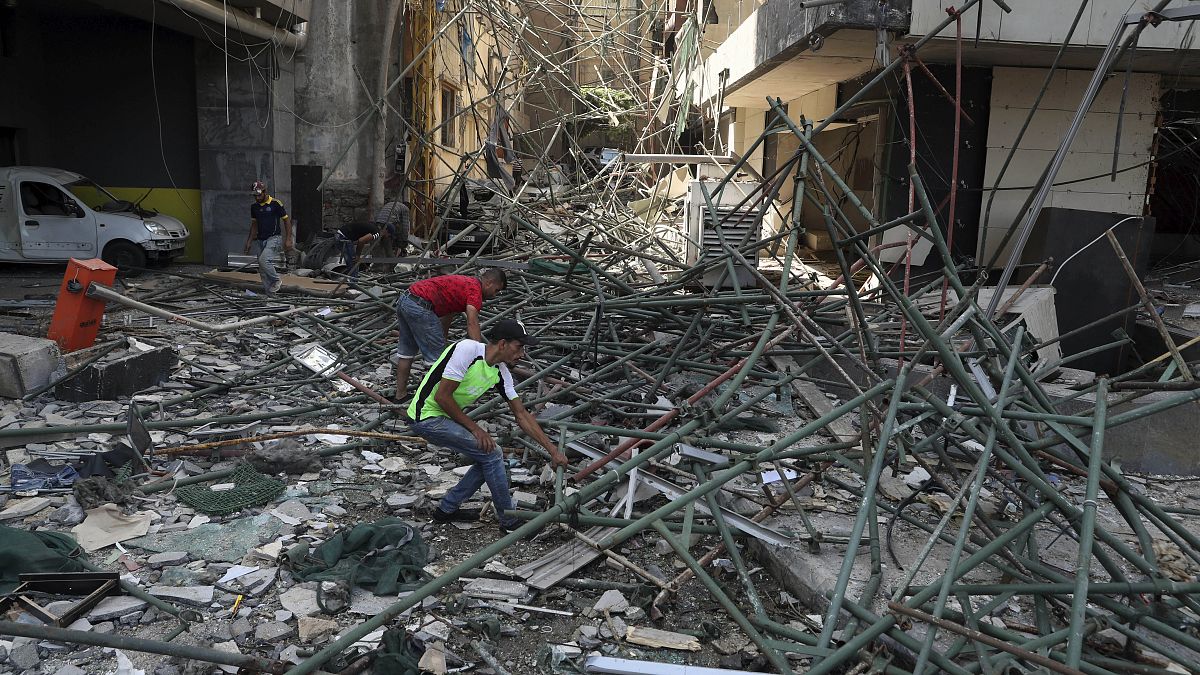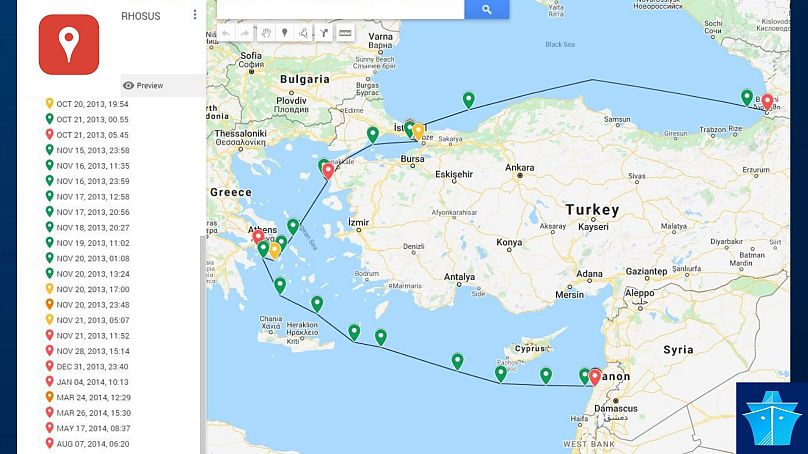An investigation by The Cube has tracked down a ship that arrived in the Lebanese capital nearly seven years ago.
In the wake of the catastrophic explosions in Beirut, Lebanese officials have pointed the finger at a stock of ammonium nitrate at the city's port as the most likely cause for the blast pending their investigation.
How the shipment made it to the port and why such dangerous cargo remained there for more than six years, has been central to the questions raised in the aftermath.
An investigation by The Cube has tracked down the ship which held more two thousand tonnes of ammonium nitrate, making it to the Port of Beirut in 2013.
After becoming embroiled in both a legal and financial dispute, the ship never left Beirut's waters and the explosive material was transferred onto land in the port.
Why did the Rhosus dock in Beirut?
In 2015, a publication that reports on legal maritime disputes detailed the case of a cargo vessel, which had been abandoned in the Port of Beirut two years prior.
In September 2013, the Rhosus, a Moldovan-flagged ship, set sail from Georgia with 2,750 tonnes of ammonium nitrate — the same amount as was being stored in Hangar 12, the warehouse that exploded on Tuesday.
It's intended destination was Mozambique but the ship had to stop in Beirut due to "technical problems".
Articles from the Seafarer's Union of Russia detailed the same case, saying that Russian members of the crew had not been paid. The Union, which is affiliated with the International Transport Workers' Federation (ITF), reported that the crew was concerned about the nature of the cargo.
Euronews contacted Lloyd's List, a Maritime Intelligence agency, to corroborate the reports. They cited a briefing by a Beirut-based law firm who said that the ship was abandoned and detained by the port's state control. This happened "after the charterer and cargo interests lost interest in the consignment of ammonium nitrate," according to Lloyd’s List
The agency added that their marine insurance sources "stressed that such a conclusion is preliminary at this stage, pending proper investigation".
"At some point between the detention and the sinking, some 2,750 tonnes of ammonium nitrate - an industrial chemical widely used in the manufacture of fertiliser and of both commercial and illicit explosives - were warehoused inside the perimeters of the port," Lloyd's List added.
The Cube has contacted the last registered owner of the Rhosus for comment but had not received a response at the time of publication.
Tracking the Rhosus' movements in 2013
By cross-referencing multiple sources, including logs from the International Maritime Organisation (IMO) and the Equasis database, Euronews confirmed that a ship had been sailing under the flag of Moldova. All sources listed the Rhosus as a “general cargo ship”, measuring over 86 metres long.
Using ship coordinates provided to The Cube by Marine Traffic, we traced the last recorded journey of the Rhosus in 2013 to see how it ended up in the Port of Beirut.
The vessel set off from Batumi, Georgia, on September 27, 2013, with an intended destination of Beira, Mozambique.
The Rhosus stopped for two days in Istanbul and made port in Athens, Greece for more than three weeks from October 21. It was not tracked moving again by Marine Traffic until 15 November, when it made steady progress through the Mediterranean Sea.
Instead of turning south towards the Suez Canal and on to Mozambique, the vessel headed to the Lebanese capital and arrived near Beirut on November 20. The next day, Marine Traffic tracked the ship’s location to an anchor position within the port.
Within a week, it was located in a different loading bay, near but not adjacent to Hangar 12.
The last recorded reading of the Rhosus was made on August 7, 2014, when it was located near breakwaters in the port.
The diplomatic dispute
The ship’s route matches with reports, but questions remain about why the ship was virtually stationary in the Port of Beirut for many months, and what happened to its crew and cargo.
In a statement to The Cube, the ITF confirmed that they had handled the case of the abandoned crew aboard the Rhosus in 2014.
The ITF said that the ship was arrested by port authorities for unpaid bills for the payment of wages. This was believed to be in the region of $100,000 (equivalent to more than €84,000 in 2020). The ITF told us that because of this, the Rhosus was “likely to be detained for a long time”.
Lloyd’s List intelligence records also show that the Rhosus was seized in February 2014 on account of “unpaid bunkers”. They said that the unattended ship sank in the breakwaters in February 2018.
“[The] owners confirmed [that the] cargo owner [had] disappeared with cargo documents,” said an ITF spokesperson.
After employing a local lawyer, the crew of the Rhosus lodged complaints about back pay and asked to leave the ship.
This started a diplomatic tussle over their repatriation, with the ITF saying that authorities from Moldova, Ukraine and Lebanon were asked to assist with proceedings.
The crew was eventually allowed to leave the ship and were later repatriated in September 2014.
What happened next?
In 2017, the IMO issued guidance about how to handle the carriage of ammonium nitrate, citing two separate accidents relating to the volatile substance.
They warned against "the application of heat" near the fertiliser and pointed to dangers relating to its decomposition.
Lebanese lawmaker Salim Aoun posted letters on social media showing customs officials also expressing concerns about the cargo to judicial authorities.
Correspondence in 2016 shows customs officers questioning whether they could re-export the shipment due to the volatile nature of the nitrate.
Knowing the potential dangers of ammonium nitrate under certain conditions, questions remain as to why nothing was done.
Click on the player above to watch The Cube's investigation.

